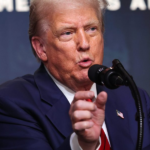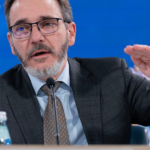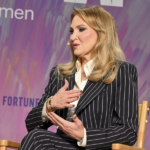Until now—or more specifically, until Friday.
Late last week’s bombshell jobs report from the Bureau of Labor Statistics threw the dual mandate of the Fed (inflation at 2% and maximum employment) into sharp focus. The labor market is doing considerably worst than previously realized, to the tune of 258,000 jobs stripped from earlier estimates and unemployment pushing up to 4.2%.
“The data that I think we know is that the economy is slowing … and that means in the near term it may become appropriate to start adjusting the federal funds rate.”
“At the same time, the labor market has softened. And I would see additional slowing as unwelcome, especially since we know that once the labor market stumbles, it tends to fall quickly and hard. All this means that we will likely need to adjust policy in the coming months.”
More importantly, neither Presidents Kashkari or Daly—or Governor Cook—were among the dissenters a the July meeting. With Governor Chris Waller and FOMC member Michelle Bowman already lobbying for a cut, the ranks of those on the dovish end of the spectrum are growing by the day.
“Pricing of a September Fed rate cut ticked up from 90% to 95% amid the shifting rhetoric, with 60bps of cuts priced by the December meeting (+2.0bps on the day),” noted Deutsche Bank’s Jim Reid to clients on Thursday morning.
Goldman Sachs did have a potential counter to this seemingly foregone conclusion. Chief U.S. economist Jan Hatzius, wrote earlier this week his call is three consecutive cuts of 25 points in September, October, and December (followed by two more 25bp cuts in 2026H1), but cautioned: “A delay is possible if upcoming reports show bigger-than-expected price hikes and a rebound in the labor market.
“But a 50bp cut in September is also possible if the unemployment rate rises again in the August employment report or initial jobless claims increase from their still-low level. Even after Friday’s front-end rally, our funds rate forecast remains below market pricing, especially on a probability-weighted basis.”
Had the Fed learned of he “bombshell” jobs report in real time, Professor Jeremy Siegel believes the Fed would have not only cut this month, but by two clicks.
The emeritus professor of finance at The Wharton School of the University of Pennsylvania wrote in a column for WisdomTree, where he is senior economist, that the Fed may have even been tempted to lower by 50bps.
“A slower cadence, a “firm but flexible glide‑path”, keeps the committee’s hawks on board while acknowledging that real activity is cooling; first‑half real GDP averaged only 1.2% at an annual rate, and forward indicators such as continuing claims are inching higher.”
Professor Siegel, like many other economists, are looking to the Jackson Hole Symposium later this year for hints of an about-turn on monetary policy.
But even then, Professor Siegel—like some other notable economists—still believe Fed chairman Jerome Powell should step down before his term is up.
“In that case, a Republican-led Congress, already skeptical of the central bank, could impose serious structural restrictions, including changes to the Fed’s governing mandate or the president’s power to remove the Chair. We must remember: the Fed is a creature of Congress. It has no constitutional status, and its rules can be rewritten.”









